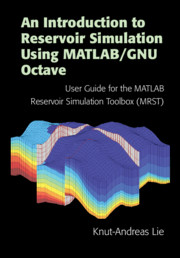 An Introduction to Reservoir Simulation Using MATLAB/GNU Octave
An Introduction to Reservoir Simulation Using MATLAB/GNU Octave Book contents
3 - Grids in Subsurface Modeling
from Part I - Geological Models and Grids
Published online by Cambridge University Press: 22 July 2019
Summary
The chapter explains how you can generate grid models to represent subsurface reservoirs. We outline a number of elementary grid types: structured/rectilinear grids, fictitious domains, Delaunay triangulations, and Voronoi grids. We then explain stratigraphic grids that are commonly used to model real subsurface formations, including in particular corner-point and perpendicular bisector (PEBI) grids. We explain how such grids are represented in MRST using a data structure for general unstructured grids, and we discuss how to compute geometric properties like volumes, face areas, face normals, etc. We end the chapter by presenting an overview of alternative gridding techniques, including composite grids, multiblock grids, and control-point and boundary conformal grids.
Keywords
- Type
- Chapter
- Information
- An Introduction to Reservoir Simulation Using MATLAB/GNU OctaveUser Guide for the MATLAB Reservoir Simulation Toolbox (MRST), pp. 55 - 110Publisher: Cambridge University PressPrint publication year: 2019
- Creative Commons
- This content is Open Access and distributed under the terms of the Creative Commons Attribution licence CC-BY-NC-ND 4.0 https://creativecommons.org/cclicenses/


